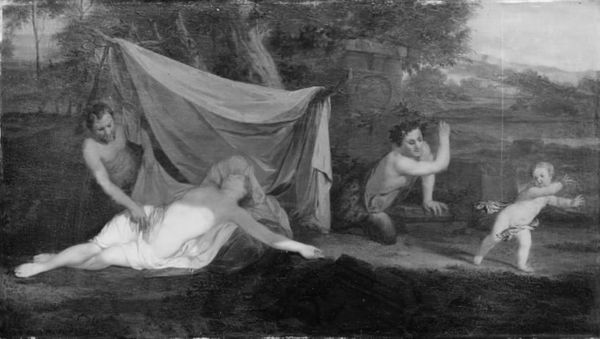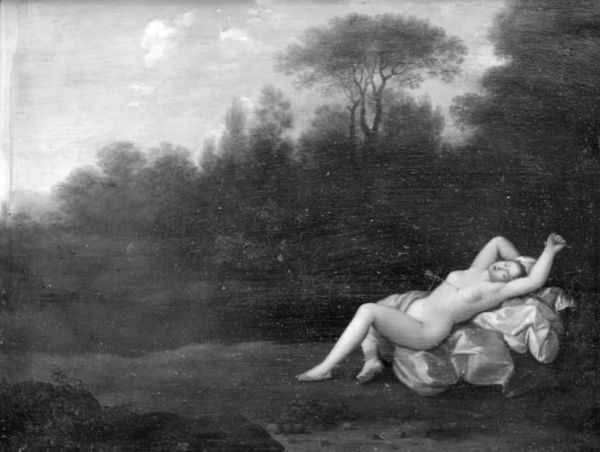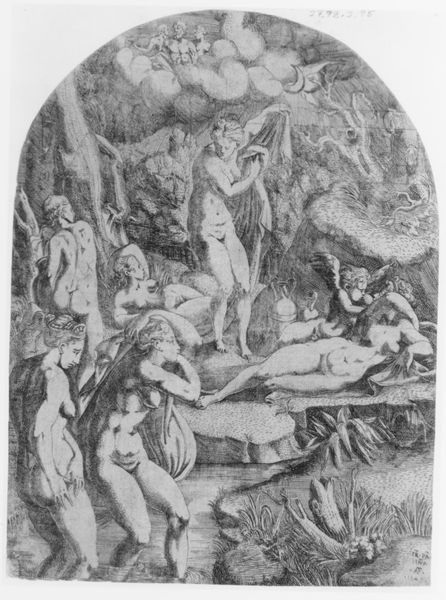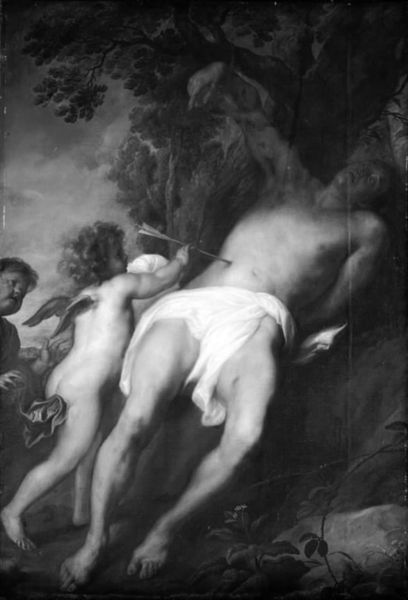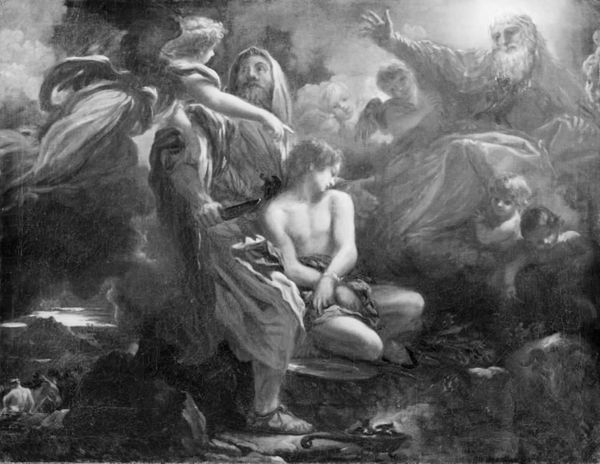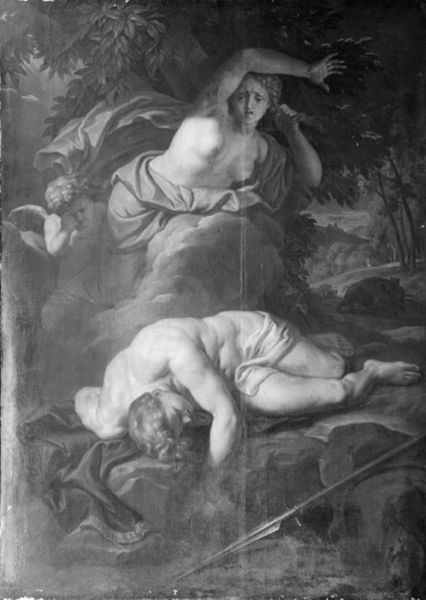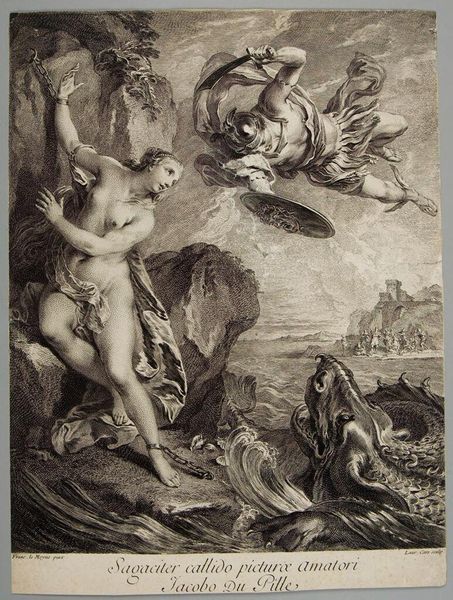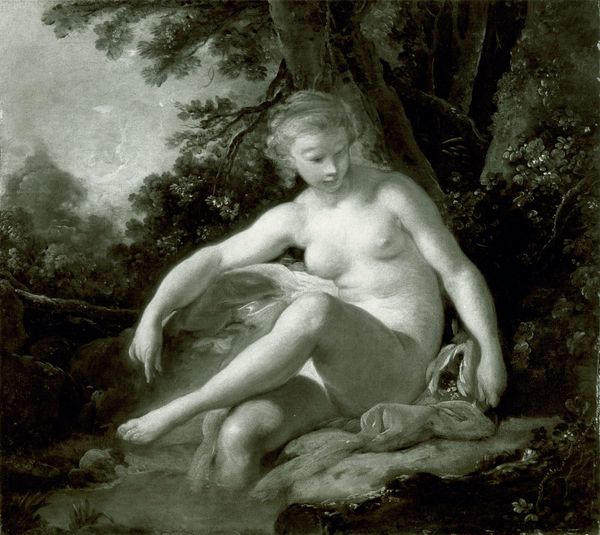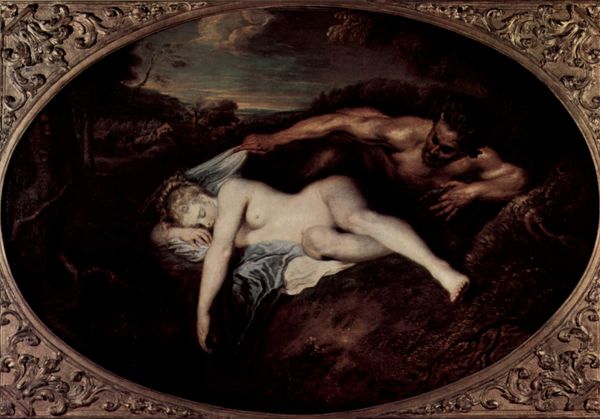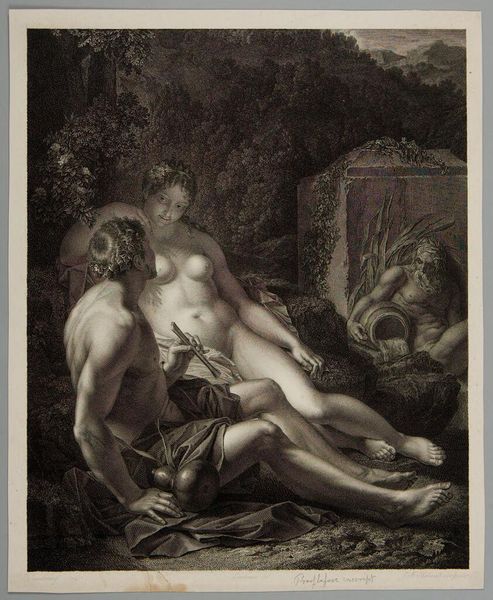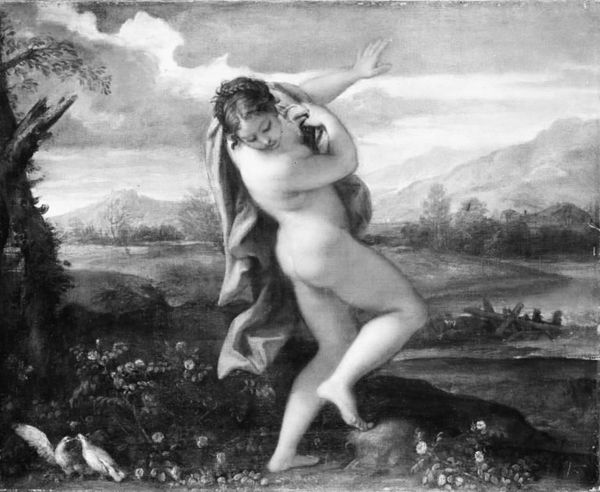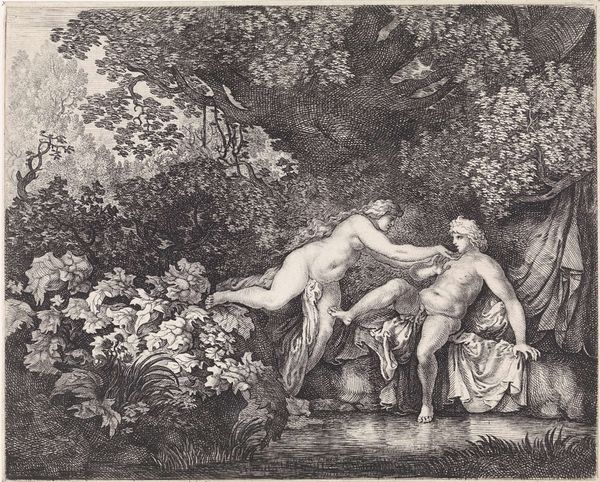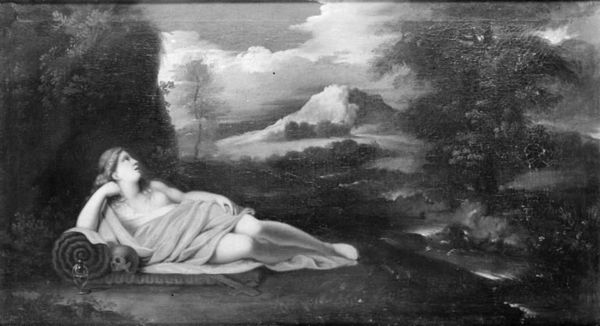
painting, oil-paint, canvas
#
baroque
#
painting
#
oil-paint
#
landscape
#
canvas
#
black and white theme
#
black and white
#
monochrome photography
#
monochrome
#
nude
#
monochrome
Dimensions: 34 cm (height) x 46 cm (width) (Netto)
Editor: Here we have Eglon van der Neer's "Diana and Nymphs," created sometime between 1649 and 1703, using oil paint on canvas. It’s a bit faded, almost monochromatic now, and depicts a group of figures reclining in what looks like a forest setting. What jumps out to me is the palpable luxury and leisure afforded by these bodies amidst an obviously productive space. How might we consider this from a materialist point of view? Curator: Well, let's consider the very oil paint itself. How was it sourced? Who ground the pigments? Was it local or imported? This painting screams of opulent consumption. Even the subject matter speaks to a privileged class, detached from the labor required for survival, evoking hunting rituals of European nobility rather than reflecting daily work practices. Who commissioned it, and how would it have been displayed? Editor: So, the painting isn't just *of* leisure, but is *itself* a product of it? I mean, think about the time and skill that went into creating the illusion of those textures on the figures’ skin – the artist's labor becomes part of the equation too, doesn't it? Curator: Absolutely. Think about the layers of meaning embedded within the material itself: the cost of canvas versus wood panel, the availability of pigments determining color palettes. Consider this: were there any regulations placed by artists guilds dictating use, or sales price? And more importantly, how do these very things relate back to a very real and powerful social order? What limitations may have occurred as a result of them, and who may have benefitted or suffered from these conditions? The bodies presented as subjects also had a life determined and maintained through materials. Editor: It makes me rethink the ease with which I initially viewed the scene. There’s a whole system of labor and access underpinning it. Curator: Exactly! Seeing art through a material lens illuminates these often-overlooked connections and the inherent socio-economic systems involved in its very being.
Comments
No comments
Be the first to comment and join the conversation on the ultimate creative platform.
